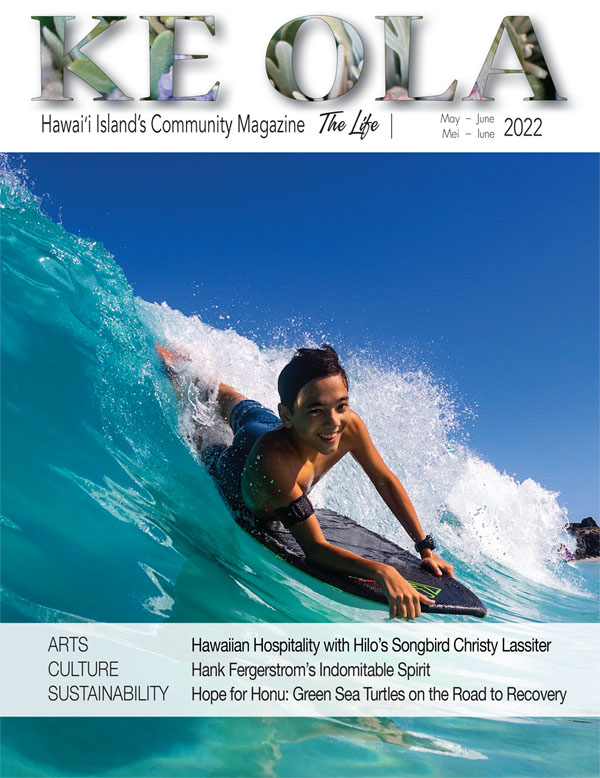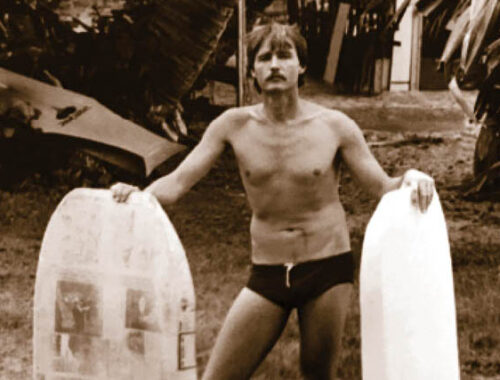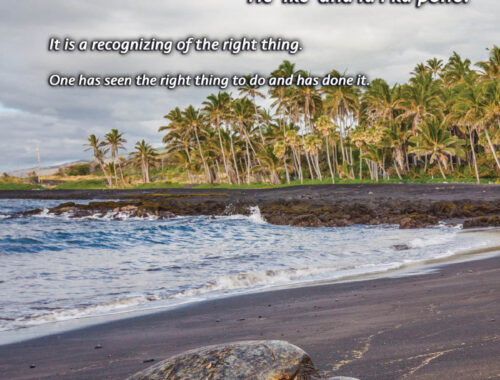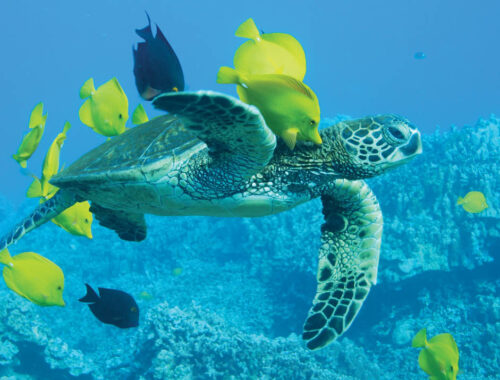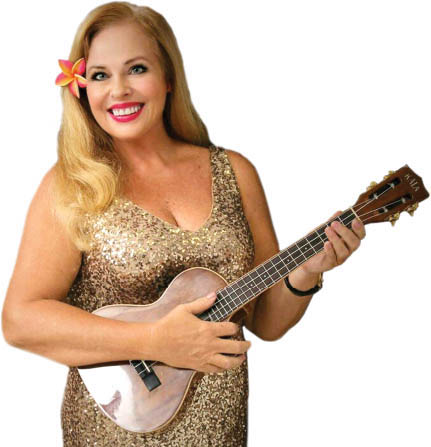
Hawaiian Hospitality with Hilo’s Songbird Christy Lassiter
By Nancy Kahalewai
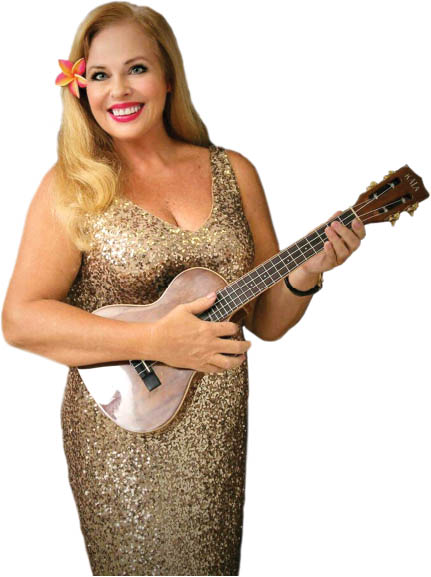
Since the 1800s, many different types of music have deeply and permanently influenced Hawaiian music. European folk songs and orchestras, Christian hymns, Portuguese ‘ukulele and Spanish steel guitars, Mexican ranchera and Puerto Rican rhythms, American musicals and big bands have all contributed. As the Hawaiian Islands continued to adapt to foreigners arriving on their shores, traditional Hawaiian music and dance also began a process of acculturation with the instruments and songs from visitors, entrepreneurs, missionaries, and immigrants from all over the world. By the 20th century and the beginning of the recording industry, the stage was set for the “Golden Age of Hawaiian Music.”
In describing the distinctive evolution and expansion of Hawaiian music during the 20th century, Honolulu magazine (December 2010) stated, “Its roots in language and culture give it an almost inexhaustible flexibility, letting it incorporate outside influences, from swing to jazz to rock, without losing its own distinctive personality. Trace its development from the monarchy era to the age of rock ‘n roll, and you’re struck by Hawaiian music’s ability to remain relevant to each new generation, and by its continued popularity not only in the Islands, but across the globe.”
Hilo’s Songbird
Christy Leina‘ala Lassiter grew up in an extended family that thrived in this golden age, which she describes as “a kind, gentle and pleasant era of super gracious hospitality.” Sunday dinners and beach picnics were always a time to relax and enjoy music and hula with family and friends, as everyone would come together to laugh, sing, and dance. The elders were genuine and generous, she recalls, “always asking about your family, observing your attire, and feeding you.” She fondly remembers those days when people didn’t worry so much, and “you kept your appointments, and you kept your word!”
Christy’s success is a result of Hawai‘i Island’s ranching and hospitality boom. Her roots span upslope Hualālai, Pana‘ewa, and Hilo’s bayfront areas. Her Irish, Welsh, and Scottish ancestry merged generations ago with her maternal Hawaiian ‘ohana, and throughout her life she was exposed to the culture and values of them all. Camaraderie and music were infused with what she calls the “happy spirit of sharing and caring that stayed in the ears and deep in the heart.”
Many of Christy’s childhood memories were set in the family’s Hilo home that was built in 1886 and named Hale Alani (House of Allen), after her maternal great-grandfather Allen S. Wall, who arrived from New Jersey to raise sheep on Hawai‘i Island. Her nana (grandmother) Kapua Wall Heuer lived in this home where Christy and her sister, Keala, learned the gracious art of Hawaiian hospitality while entertaining the many guests who passed through and marveled at the gorgeous 180-degree view of Hilo Bay. Since her first little guitar and record player, Christy fell in love with music. Her father, Chuck Lassiter, who worked for United Airlines, had an extensive record collection and she remembers singing and playing Sound of Music over and over. The whole family loved to throw parties and her nana encouraged her mother, sister, and her to sing and dance the hula for everyone, as well as assist with setting the table with their finest dishes and flowers, and serving food that included an abundance of fresh local produce, as well as the family’s pasture-grown beef or occasional roasted lamb.
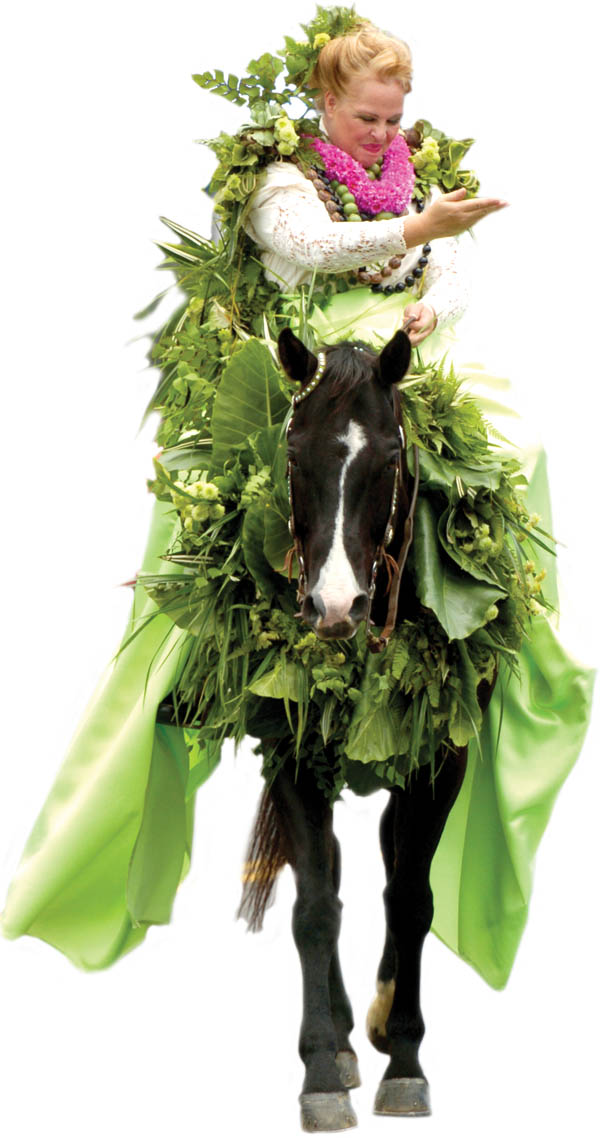
She easily embraced the idea of performing, even directing her sister in their duo presentations. She says she “loved the vibe” from the fresh greens used in their costumes and table decor to the delightful responses of the guests. “Everyone participated and enjoyed these moments immensely, while they all sang along,” she recalls fondly. This style of grand hospitality was ushered in during an era when the glamour, beauty and excitement of the Hawaiian Islands were first embraced by the modern world. “Today, these classic songs reflect precious memories, life experiences, and love stories of people and places, which all enhance the accompanying hula and give the audience ‘chicken skin.’”
In third grade, Christy was enthralled when the Honolulu Symphony Orchestra came to Hilo—even her teacher noticed her affinity for performances. She later studied hula basics with Aunty “Sweetheart” Nathaniel at the Haili Gym, where she practiced the popular hapa-haole (cultural fusion) songs of the day. She also learned the piano and ‘ukulele, and later performed at Uncle Billy’s Hilo Bay Hotel every Tuesday night for three years.
Family summers were usually spent traveling in an annual trail ride with their Mahealani Ranch cousins. There were many years growing up in Hilo and Pāpa‘ikou, where they lived a ranching lifestyle, learning practical skills in animal husbandry, particularly with horses. The tasks involved could be quite gritty, including addressing injuries, deworming, saddle care, grooming, breeding, sheltering, feeding, and brushing them. “We were very involved with the 4-H Club, and that kept us out of trouble. We were strong barnyard girls who could go from surgery in the barn to slapping on lipstick and being beautiful!”
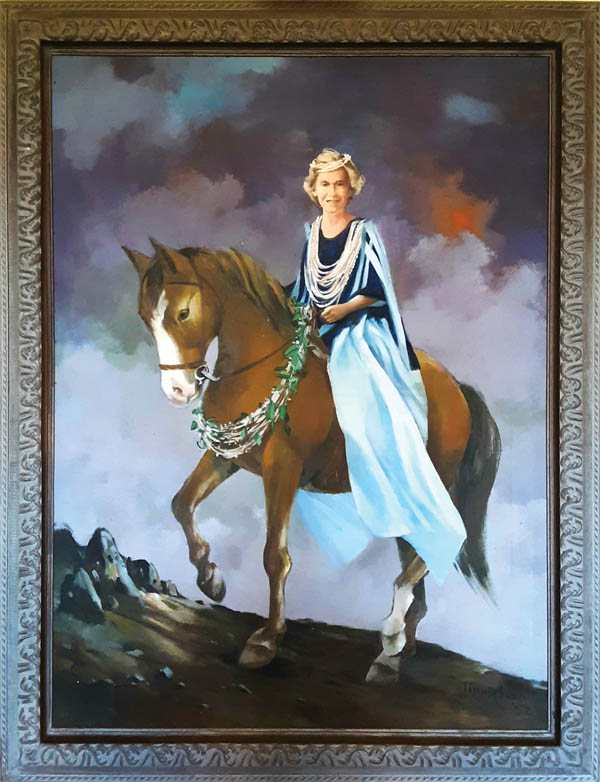
It was Nana Kapua who taught Christy’s mom, “Pudding” Burke, her sister Keala, and her about the tradition of pā‘ū riding. “The 12 yards of satin are actually meant to protect our clothes underneath. They were held in place with kukui nuts, tucked in at the waist, and easy to release in case the fabric got caught up or entangled.” Her own first pā‘ū ride was during the 1975 Merrie Monarch Festival. She soon took up photography and noticed that the horses loved showing off for an audience and to have their pictures taken. “Horses are very sensitive, aware, and sometimes vain. They love to have fun, too. We would take them swimming in Hilo Bay back when there were stables next to the Hilo Civic Auditorium. We would take off their saddles and leave the bridles on, and then they played games with each other in the water!”
In 1981, Christy won the Miss Aloha Hawaii Pageant, receiving a scholarship. That evolved to her becoming a pageant emcee at future events in the Hilo Civic. “The winners of this pageant in Hilo, as well as the Miss Kona Coffee Pageant and pageants from other islands, go on to compete in the state’s Miss Hawaii contest and these winners go on to compete in the national Miss America Pageant,” Christy explains. She also attended University of Hawai‘i at Hilo, receiving a bachelor of arts in English, and worked as a career counselor for Alu Like for years.
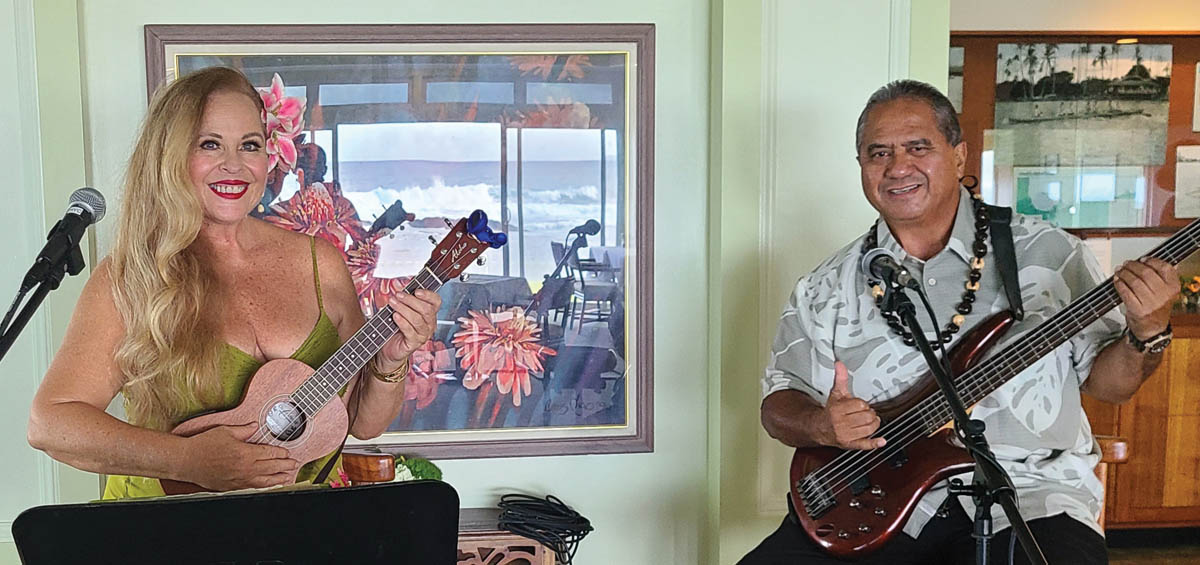
Recording a Legacy
Her first album, entitled Le‘ale‘a, was produced in 2016 by Red Moon Recording Studios in Hilo. She’s performed for years, both privately and publicly, “but in March 2020, the pandemic abruptly brought all live music to a halt,” she reflects. “I soon realized that I had to find a new audience.” Her performances at weddings, the Hilo Yacht Club, and everywhere else were suddenly shut down, and she retreated into her inner introvert. Thus, her own very personal song was born, “Corona Blues,” and is featured on her second album, ‘EHA (2021). The album went on to earn a Nā Hōkū Hanohano awards finalist achievement.
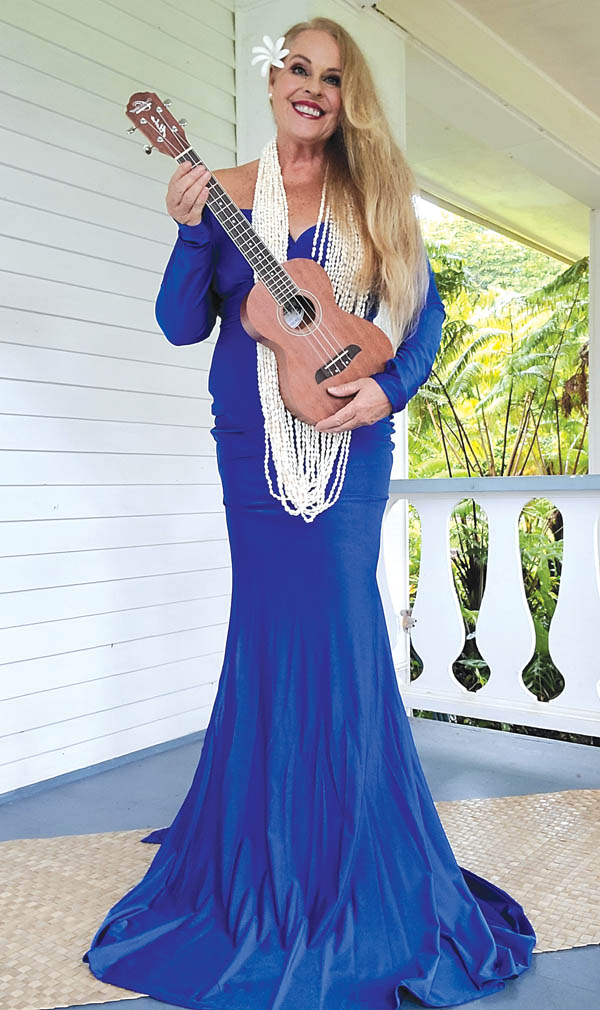
Last year, she was inspired to do yet another recording. “Covid taught me the importance of leaving a legacy,” she realized. So, she contacted her musician buddies and invited them to think about their favorite hula songs. “In October 2021, we recorded a new album at Hilo’s Palace Theater, and I decided to produce it myself.” It is entitled Kou Lima Nani E—Na mele hula, meaning Your Beautiful Hands—the songs and stories of hula.
Being mindful of the energy from her listeners, and the healing force that music can have, is of utmost importance to her. “I know that when I sing, it affects my audience and even me on a cellular level. So, with my gifts, I try to deliver sweet sounds to others, to give them a reminder of the tender, caring, sweet side of the world.”
Touching the souls of others is truly a blessing that she cherishes. “When I perform or record, I use my na‘au [deep instincts] to tune into those around me. I use my heart too, incorporating all of life’s blues, joys, and sacred journeys to deliver emotive songs that engage my audience in genuine ways. And I always try to honor the intentions of other songwriters when I sing their songs.”
Presentation and intention are important, as “they reflect on your whole community. I know that I carry all of Hilo with me when I perform, including my ancestors and all the people who support me. Our kuleana [sacred responsibility] is to perpetuate the deeper meaning of our Hawaiian music. It is all part of the fabric of my culture—the humility, reverence, and performing skills that Hilo and my ‘ohana have given me. It’s like all of my life experiences, education, and DNA are strung up into a sweet lei. Leina‘ala, that’s me!” ❖

For more information: christylassitermusic.com
